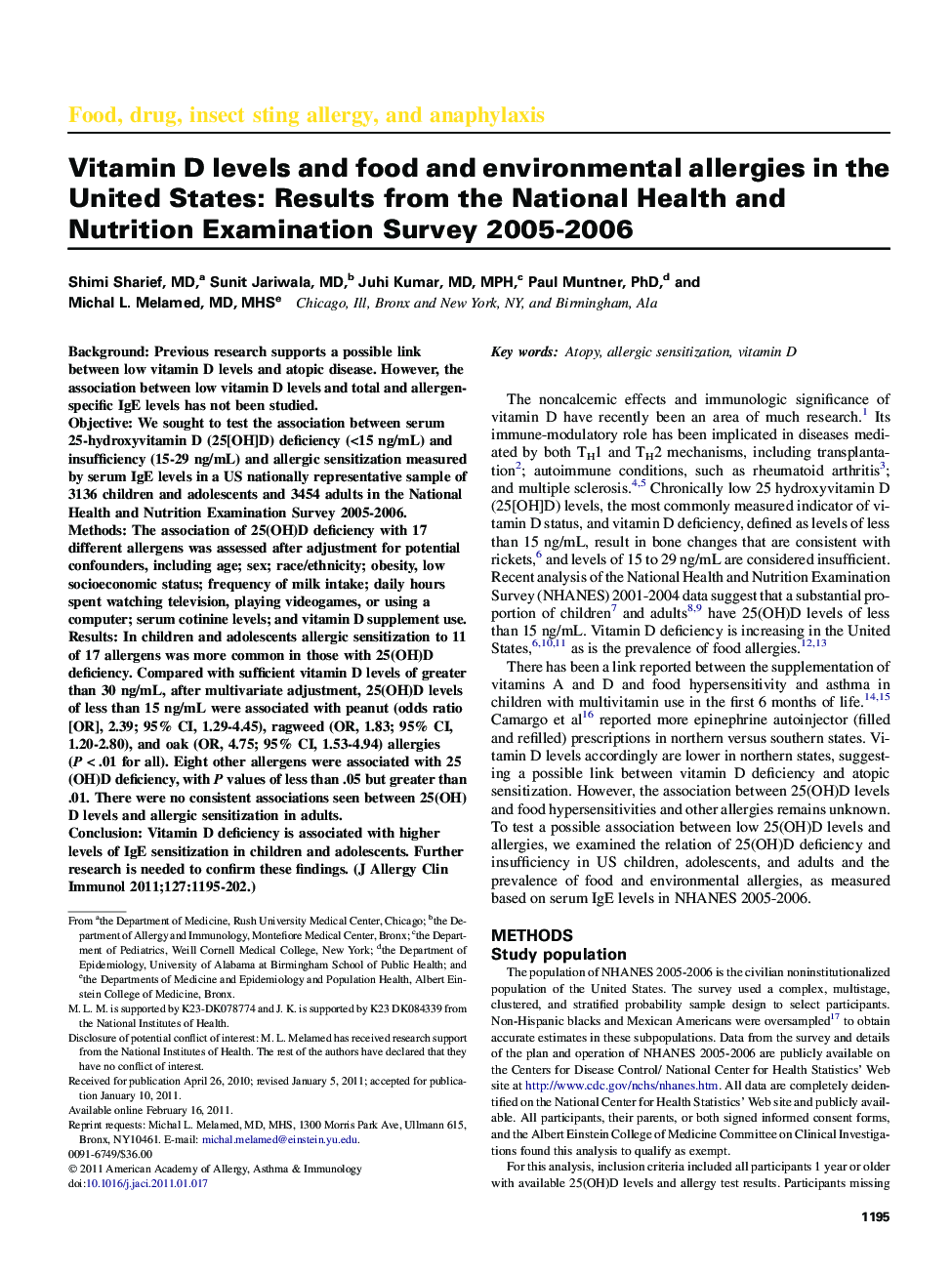| Article ID | Journal | Published Year | Pages | File Type |
|---|---|---|---|---|
| 3199896 | Journal of Allergy and Clinical Immunology | 2011 | 8 Pages |
BackgroundPrevious research supports a possible link between low vitamin D levels and atopic disease. However, the association between low vitamin D levels and total and allergen-specific IgE levels has not been studied.ObjectiveWe sought to test the association between serum 25-hydroxyvitamin D (25[OH]D) deficiency (<15 ng/mL) and insufficiency (15-29 ng/mL) and allergic sensitization measured by serum IgE levels in a US nationally representative sample of 3136 children and adolescents and 3454 adults in the National Health and Nutrition Examination Survey 2005-2006.MethodsThe association of 25(OH)D deficiency with 17 different allergens was assessed after adjustment for potential confounders, including age; sex; race/ethnicity; obesity, low socioeconomic status; frequency of milk intake; daily hours spent watching television, playing videogames, or using a computer; serum cotinine levels; and vitamin D supplement use.ResultsIn children and adolescents allergic sensitization to 11 of 17 allergens was more common in those with 25(OH)D deficiency. Compared with sufficient vitamin D levels of greater than 30 ng/mL, after multivariate adjustment, 25(OH)D levels of less than 15 ng/mL were associated with peanut (odds ratio [OR], 2.39; 95% CI, 1.29-4.45), ragweed (OR, 1.83; 95% CI, 1.20-2.80), and oak (OR, 4.75; 95% CI, 1.53-4.94) allergies (P < .01 for all). Eight other allergens were associated with 25(OH)D deficiency, with P values of less than .05 but greater than .01. There were no consistent associations seen between 25(OH)D levels and allergic sensitization in adults.ConclusionVitamin D deficiency is associated with higher levels of IgE sensitization in children and adolescents. Further research is needed to confirm these findings.
